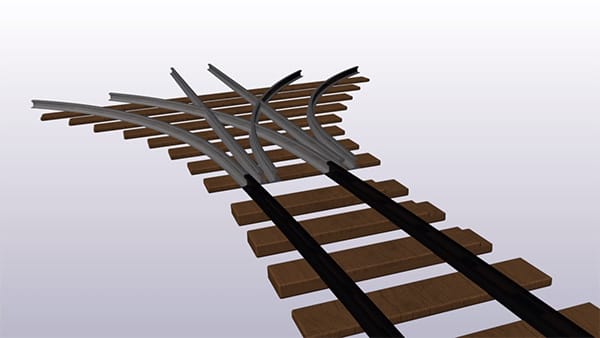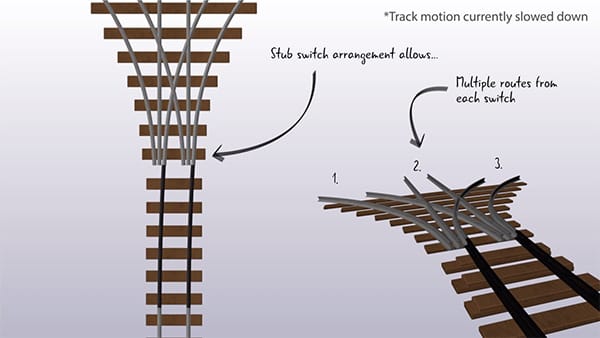Technology
Stub switch
During the early stages of the Repoint projects, a cross industry focus group was established to generate candidate track switching solutions. These sessions resulted in over 400 individual ideas related to improvements to switches and crossings, covering their physical design, signalling and operation, and maintenance activities.
The first filter for down-selection was to exclude any ideas which were mechanically implausible. Construction/operation of some ideas will not be possible, and these ideas were also rejected at an early stage. Secondly, any ideas which would require wholesale modification of the entire rolling stock fleet were excluded. These included, for example, the removal of all wheel flanges or steerable bogies. The remaining solutions were scored and ranked based on the degree to which they met the functional and non-functional requirements. A more detailed account of the ranking and evaluation process can be found in Bemment et al. (2016)

The most promising concept, chosen to be taken forward for development was a hopping stub switch, the Repoint solution. The design is based around an arrangement known as a stub switch. The stub switch reverses the elements in a traditional switch, and replaces the long, planed down switch rails with short, stub-ends formed of full section rail which are able to move between positions.

A lab scale demonstrator of an actuator, with stub switch rail ends was constructed in the lab as a proof of concept. Discussions with RSSB and railway infrastructure operators regarding a full scale demonstration concluded that, the stub switch arrangement was a step beyond what could feasibly achieved in the current project timescales, hence the stub switch was replaced with a conventional switch panel. The multiple redundant actuators and the actuation method remain in the current Repoint Light Programme.
Bemment, S.D., Ebinger, E., Goodall, R.M., Ward, C.P. and Dixon, R., (2016). Rethinking rail track switches for fault tolerance and enhanced performance. Proceedings of the IMechE, Part F: The Journal of Rail and Rapid Transit, p.0954409716645630